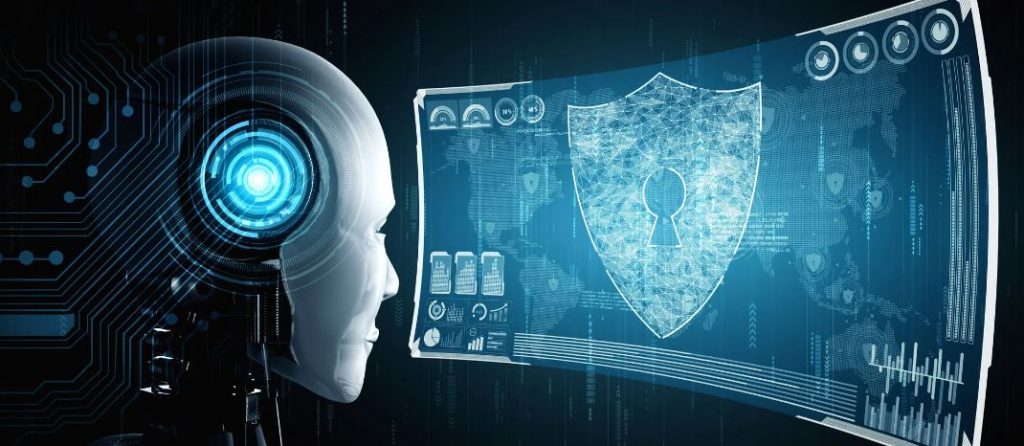The rapid advancement of artificial intelligence (AI) has triggered an ongoing battle between malicious hackers and those dedicated to protecting digital systems. This technological arms race has far-reaching consequences for the safety and stability of our interconnected world. Let’s explore how AI is shaping the landscape of cybercrime and cybersecurity.
AI as a Weapon for Cybercriminals

AI’s capability to process vast amounts of data and adapt to different scenarios has become a powerful asset for those with malicious intent. Here’s how AI is being exploited for criminal activities:
Automated Exploits
AI allows hackers to automatically scan systems for vulnerabilities, dramatically speeding up the process of identifying and exploiting weak points.
Enhanced Phishing Scams
AI can craft highly convincing fake emails that mirror real communications, fooling users into sharing sensitive information. It also identifies the best potential targets by analyzing behavioral data.
Brute-Force Attacks
AI accelerates brute-force password-cracking techniques, systematically attempting numerous password combinations with greater speed and accuracy than traditional methods.
Deepfake Manipulation
AI-generated deepfakes, which produce convincing but fake audio or video, can be used to deceive, defraud, and manipulate individuals. These can play a critical role in spreading misinformation, conducting impersonation scams, or even blackmailing victims.
Data Poisoning
By tampering with the data that feeds into AI systems, attackers can intentionally mislead these systems, causing them to make incorrect decisions that benefit the cybercriminal.
DDoS Attacks
Distributed Denial of Service (DDoS) attacks, which overwhelm systems with excessive traffic to cause downtime, are being increasingly automated with AI-driven bots. These bots can launch massive attacks with minimal human intervention.
AI as a Shield Against Cybercrime

Just as AI serves cybercriminals, it is also a key component in the fight to safeguard networks and systems. Below are some of the ways AI is employed to bolster cybersecurity:
Anomaly Detection
AI systems analyze patterns of normal network behavior and can swiftly detect irregularities that may indicate cyber threats. This early detection capability is vital for preventing attacks before they escalate.
Predictive Risk Management
AI can analyze past attack patterns and vulnerabilities to forecast where future threats are likely to emerge, allowing organizations to proactively address potential weaknesses.
Advanced Malware and Phishing Detection
AI tools can quickly identify and flag phishing attempts or malware, even when these threats have evolved beyond traditional detection methods.
Automated Responses
When an attack is detected, AI systems can automatically respond by isolating compromised systems, patching vulnerabilities, or cutting off access to protect other parts of the network.
Common Cybercrime Threats

As cybercrime becomes more complex, the tactics used to exploit systems and steal data continue to evolve. Some of the most prevalent cyberattack methods include:
Malware
Malicious software, commonly known as malware, refers to programs designed to harm or exploit computer systems. This includes viruses, spyware, and adware that can:
- Steal sensitive information
- Track user activity
- Cause system damage
Viruses replicate themselves and spread to other devices, often without the user’s knowledge, while spyware silently monitors online activity and steals information. Adware redirects users to advertising websites without their consent.
Botnets
Botnets consist of networks of compromised devices under the control of cybercriminals. Once a device is infected, it becomes part of a botnet and can be used for criminal purposes such as:
- Sending spam emails
- Spreading malware
- Conducting DDoS attacks
A notorious example was the Simda botnet, which affected devices worldwide before being dismantled in 2015.
Denial of Service (DoS) Attacks
Denial of Service (DoS) attacks flood networks or websites with excessive data, rendering them unusable. In a Distributed Denial of Service (DDoS) attack, multiple compromised devices work together to overwhelm a single system. While these attacks don’t usually involve data theft, they can lead to significant downtime and financial loss for businesses.
International Legal Efforts to Fight Cybercrime

Cybercrime often crosses national boundaries, requiring international cooperation to effectively combat it. Various legal frameworks have been established to address the global nature of these threats:
Mutual Legal Assistance Treaties (MLATs)
These agreements allow countries to collaborate in investigating and prosecuting cross-border cybercrime.
Regional Cybercrime Laws
Different regions have developed their own legal guidelines to combat cyber threats. For example, the Organization of American States (OAS) adopted cybersecurity guidelines in 1999, and the African Union implemented a cybersecurity framework in 2014.
Global Frameworks
International agreements like the Budapest Convention on Cybercrime set global standards for defining offenses, establishing procedural laws, and fostering international cooperation to fight cybercrime.
Collaborative Solutions to Combat Cybercrime
Cybercrime can only be effectively tackled through collaboration between governments, private companies, and international organizations. While technical solutions are essential, legal structures and cooperative efforts are equally important.
Key Players in Cybersecurity
Private Companies
Many organizations have their own internal security measures and establish Computer Emergency Response Teams (CERTs) to respond to attacks on their systems.
International Organizations
Global bodies such as INTERPOL and the United Nations Office on Drugs and Crime (UNODC) are crucial in coordinating international efforts to combat cybercrime.
Capacity Building
Initiatives led by organizations like the International Telecommunication Union (ITU) help countries improve their ability to draft legislation and prosecute cybercriminals.
AI and Cybercrime – AI has rapidly become a double-edged sword in the realm of cybersecurity. As cybercriminals continue to develop new ways to exploit AI, the importance of using AI for defense has never been clearer. Through a combination of advanced technology, robust legal frameworks, and international cooperation, we can mitigate the risks and ensure a safer digital future.
Categories: Tech
Leave a Reply